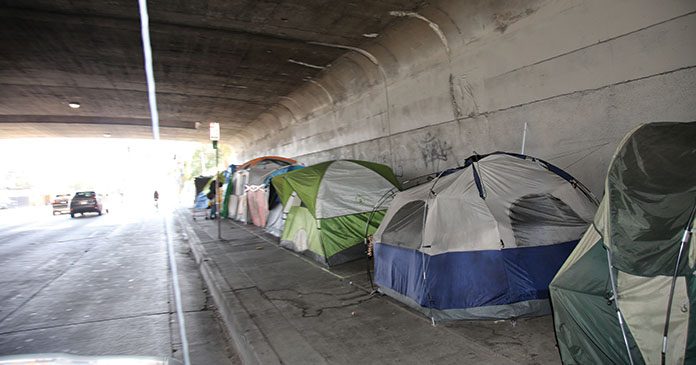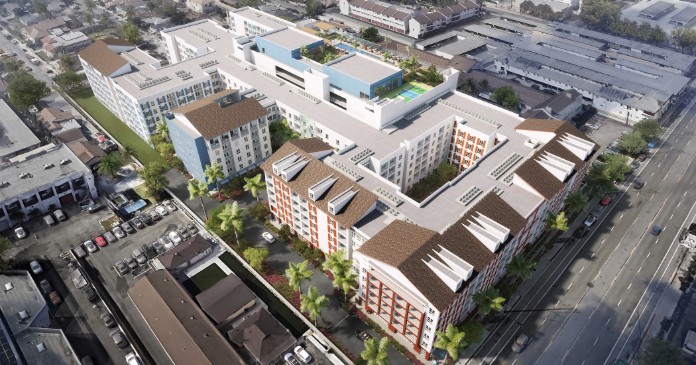
Rent control is a terrible idea that just won’t die. The latest example is a new bill working its way through the California legislature that would cap annual rent increases at 5 percent for buildings more than 15 years old until 2030. Proponents of the bill argue rent control is needed to maintain some degree of affordability in high-price areas like San Francisco, but they’re wrong. What California really needs is more housing, and this bill does nothing to address the strict zoning rules that hinder construction throughout the Golden State.
Rent control is not a new concept. From the 16th through the 19th centuries, Catholic Popes sporadically implemented rent control within the Papal States to moderate high rents caused by concentrated demand for rentals in Jewish ghettos due to laws preventing Jews from owning homes or living where they wished. Rent control has also been a common remedy for rising rents during times of war, including the Franco-Prussian war in 1870.
Rent control really got its start in the United States during World War II via the Emergency Price Control Act of 1942. A mere three years later, Scranton, Pennsylvania, was the only city of more than 100,000 people not to be under some sort of federal rent control.
Early rent control laws were different than the one being proposed in California in that they placed hard caps on rental prices rather than rent increases. These caps were occasionally adjusted by rent control boards, but such adjustments were often too little too late, which made it difficult for property owners to make money. The result was fewer rental units, and those that were available were more likely to be in poor condition.
The mobility of renters also decreased since tenants, aware of the shortage, realized that if they gave up their rent-controlled unit they were unlikely to find another one. Less mobility has pernicious effects on both the labor market and the environment since it means people are less likely to take better jobs if they involve moving or, if they take a new job, to find housing nearby. This results in a less dynamic labor market and longer commutes, creating more congestion and pollution in the process.
The obvious failures of early rent control laws sparked some changes. Instead of caps controlled by a slow-to-react board, rents were permitted to increase by some specified percentage annually. Additionally, landlords could reset rents to market rates when a tenant moved out. Some economists and others thought these changes would still enable rent control—now often called rent stabilization—to keep prices low while avoiding most of the adverse effects. They were wrong.
Subsequent studies of rent stabilization policies in Boston and New York City found that such policies still encouraged landlords to reduce supply by pulling units off the rental market, which then increased the price of un-controlled rental housing, and led to more chronic maintenance problems. The New York study concludes that, on average, even tenants in rent-controlled housing would have been better off if rent control had never existed.
Even more damning for California’s new rent control bill is a recent study that examined rent control in San Francisco. Like other studies, it found that rent control reduces renter mobility and the supply of rental housing. The authors conclude that “…the lost rental housing supply likely drove up market rents in the long run, ultimately undermining the goals of the law.”
Rent control is not going to fix California’s housing problem—it’s going to make it worse. California’s high rents are a symptom of deeper supply problems caused by excessive regulation and bureaucratic red tape that stifle development. For example, a developer in San Bruno did everything local government asked of him to get approval to build a 425-unit development. He followed the city’s transit corridor plan, agreed to add parking, and even pledged to pay $10 million into the city’s general fund. But when it came time to officially approve his development after a six-hour hearing, he was denied by a single vote. Rent control doesn’t fix this sort of dysfunction.
What California lawmakers need to do is reform local zoning laws to permit more development. California Senate Bill 50, which allows a lot more housing along transit routes by eliminating unnecessary zoning restrictions, would have been a good start, but it got derailed in the State Senate in May.
Rent control doesn’t address the underlying causes of California’s housing problem. In fact, by further reducing supply, it makes the problem worse. If rent control is the best plan California’s lawmakers can come up with to address the issue, the state’s renters should get out soon before the situation gets worse.
Author Adam Millsap is senior fellow, economic opportunity at the Charles Koch Institute. He conducts research on urban development, population trends, labor markets, and federal and local urban public policy.














